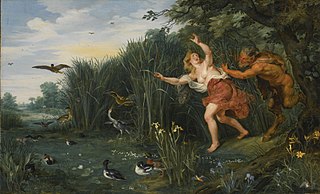
Jan Brueghelthe Younger was a Flemish Baroque painter. He was the son of Jan Brueghel the Elder, and grandson of Pieter Bruegel the Elder, both prominent painters who contributed respectively to the development of Renaissance and Baroque painting in the Southern Netherlands. Taking over his father's workshop at an early age, he painted the same subjects as his father in a style which was similar to that of his father. He regularly collaborated with leading Flemish painters of his time.

Adriaen Isenbrandt or Adriaen Ysenbrandt was a painter in Bruges, in the final years of Early Netherlandish painting, and the first of the Dutch and Flemish Renaissance painting of the Northern Renaissance. Documentary evidence suggests he was a significant and successful artist of his period, even though no specific works by his hand are clearly documented. Art historians have conjectured that he operated a large workshop specializing in religious subjects and devotional paintings, which were executed in a conservative style in the tradition of the Early Netherlandish painting of the previous century. By his time, the new booming economy of Antwerp had made this the centre of painting in the Low Countries, but the previous centre of Bruges retained considerable prestige.

Jan Gossaert was a French-speaking painter from the Low Countries also known as Jan Mabuse or Jennyn van Hennegouwe (Hainaut), as he called himself when he matriculated in the Guild of Saint Luke, at Antwerp, in 1503. He was one of the first painters of Dutch and Flemish Renaissance painting to visit Italy and Rome, which he did in 1508–09, and a leader of the style known as Romanism, which brought elements of Italian Renaissance painting to the north, sometimes with a rather awkward effect. He achieved fame across at least northern Europe, and painted religious subjects, including large altarpieces, but also portraits and mythological subjects, including some nudity.

Jan Frans van Bredael or Jan Frans van Bredael the Elder was a Flemish painter known for his landscapes, battle scenes and equestrian paintings. A prominent member of the third generation of the van Bredael family of painters of Antwerp, he was active mainly in his native Antwerp. He worked also in London and Paris where he enjoyed the patronage of an aristocratic clientele.
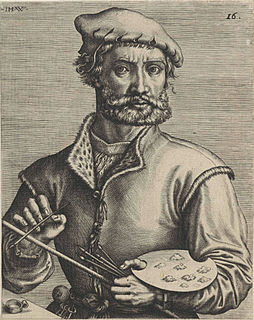
Pieter Coecke van Aelst or Pieter Coecke van Aelst the Elder was a Flemish painter, sculptor, architect, author and designer of woodcuts, goldsmith's work, stained glass and tapestries. His principal subjects were Christian religious themes. He worked in Antwerp and Brussels and was appointed court painter to Charles V, Holy Roman Emperor.

Antwerp Mannerism is the name given to the style of a group of largely anonymous painters active in the Southern Netherlands and principally in Antwerp in roughly the first three decades of the 16th century, a movement marking the tail end of Early Netherlandish painting, and an early phase within Dutch and Flemish Renaissance painting. The style bore no relation to Italian Mannerism, which it mostly predates by a few years, but the name suggests that it was a reaction to the "classic" style of the earlier Flemish painters, just as the Italian Mannerists were reacting to, or trying to go beyond, the classicism of High Renaissance art.

Jan van Kessel the Elder or Jan van Kessel (I) was a Flemish painter active in Antwerp in the mid 17th century. A versatile artist he practised in many genres including studies of insects, floral still lifes, marines, river landscapes, paradise landscapes, allegorical compositions, scenes with animals and genre scenes. A scion of the Brueghel family many of his subjects took inspiration of the work of his grandfather Jan Brueghel the Elder as well as from the earlier generation of Flemish painters such as Daniel Seghers, Joris Hoefnagel and Frans Snyders. Van Kessel’s works were highly prized by his contemporaries and were collected by skilled artisans, wealthy merchants, nobles and foreign luminaries throughout Europe.
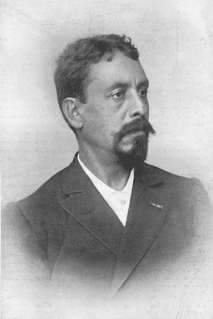
Piet Verhaert was a Belgian painter. He was a member of Les XX.

Balthasar van den Bossche (1681–1715) was a Flemish painter who is mainly known for his wide range of genre subjects and occasional portraits.

Ambrosius Brueghel was a Flemish painter from the famous Brueghel family of artists. Less prolific and less well-known than a number of his family members, his oeuvre is not very well understood and is believed to comprise Baroque still lifes, garland paintings as well as landscapes.

Georges Croegaert was a Belgian academic painter who spent most of his career in Paris. He is known for his genre paintings of scenes from elegant society and portraits of women. He also had a reputation for his humorous depictions of red-robed Catholic cardinals executed in a highly realist style.

Sir Peter Paul Rubens was a Flemish artist and diplomat from the Duchy of Brabant in the Southern Netherlands who lived during the Dutch Golden Age. He is considered the most influential artist of the Flemish Baroque tradition. Rubens's highly charged compositions reference erudite aspects of classical and Christian history. His unique and immensely popular Baroque style emphasized movement, colour, and sensuality, which followed the immediate, dramatic artistic style promoted in the Counter-Reformation. Rubens was a painter producing altarpieces, portraits, landscapes, and history paintings of mythological and allegorical subjects. He was also a prolific designer of cartoons for the Flemish tapestry workshops and of frontispieces for the publishers in Antwerp.

Jacob Peter Gouwy or Jacob Peter Gowy was a Flemish Baroque painter of history paintings and portraits. He collaborated with Peter Paul Rubens and spent time in England where he was active as a portrait painter. As the creator of a large picture of a horse painted in England he can be considered one of the pioneers of the genre of portraits of horses.

Jan Nagel was a Dutch Renaissance painter.
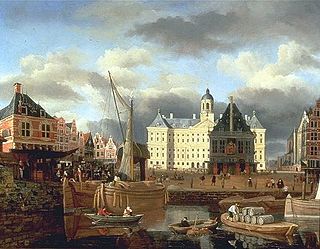
Jan van Kessel was a Dutch Golden Age draftsman and landscape painter who made many cityscapes of Amsterdam. His work is often confused with the works of contemporary painters with the same name.

Ferdinand de Braekeleer, sometimes spelled as Ferdinand de Braeckeleer, was a Flemish painter. He is known for his historical paintings and is called 'the Elder' to distinguish him from his son with the same name, who was also a painter.
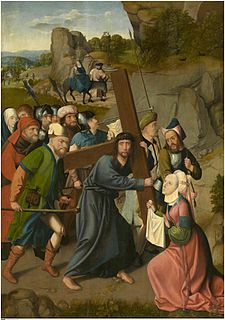
The Master of Hoogstraeten is the Notname given to a Flemish painter or a collective of painters active in Antwerp in the early 16th century. The master created principally religious paintings and is considered a member of the Antwerp Mannerists.
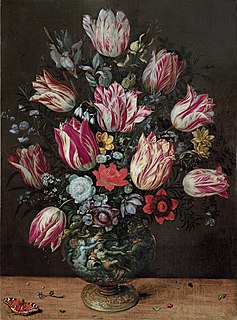
Andries Daniels was a Flemish painter who was active in Antwerp during the first half of the 17th century. He is known for his flower still lifes and garland paintings, a genre of still life paintings that he helped develop in Antwerp.

Izaak van Oosten, Isaak van Oosten or Isaac van Oosten was a Flemish Baroque landscape and cabinet painter active in Antwerp.

Jan Baptist Martin Wans or Jan Baptist Wans was a Flemish Baroque painter known for his landscapes and religious scenes.




















